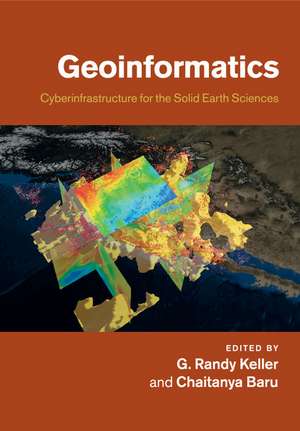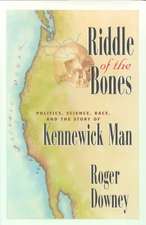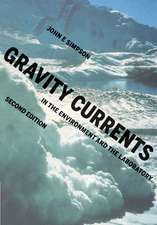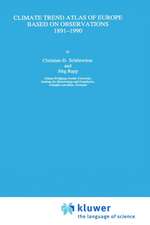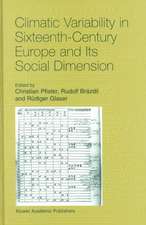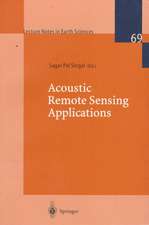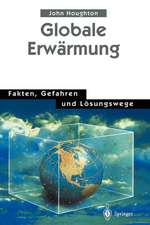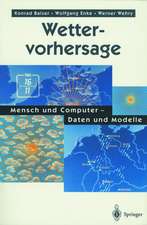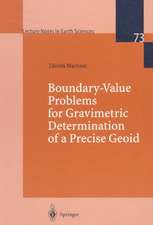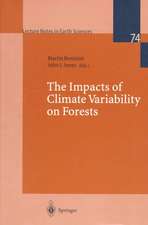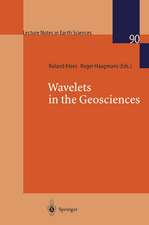Geoinformatics: Cyberinfrastructure for the Solid Earth Sciences
Editat de G. Randy Keller, Chaitanya Baruen Limba Engleză Paperback – 28 feb 2018
Preț: 404.01 lei
Nou
Puncte Express: 606
Preț estimativ în valută:
77.33€ • 80.42$ • 64.80£
77.33€ • 80.42$ • 64.80£
Carte disponibilă
Livrare economică 20 februarie-06 martie
Livrare express 06-12 februarie pentru 40.53 lei
Preluare comenzi: 021 569.72.76
Specificații
ISBN-13: 9781108446587
ISBN-10: 1108446582
Pagini: 412
Ilustrații: 46 b/w illus. 41 colour illus. 5 tables
Dimensiuni: 170 x 244 x 22 mm
Greutate: 0.66 kg
Editura: Cambridge University Press
Colecția Cambridge University Press
Locul publicării:Cambridge, United Kingdom
ISBN-10: 1108446582
Pagini: 412
Ilustrații: 46 b/w illus. 41 colour illus. 5 tables
Dimensiuni: 170 x 244 x 22 mm
Greutate: 0.66 kg
Editura: Cambridge University Press
Colecția Cambridge University Press
Locul publicării:Cambridge, United Kingdom
Cuprins
List of contributors; Preface; Introduction: 1. Science needs and challenges for geoinformatics G. Randy Keller; 2. Introduction to IT concepts and challenges Chaitanya Baru; Part I. Case Studies from Other Disciplines: 3. Semantic cyberinfrastructure: the virtual solar-terrestrial observatory Peter Fox and Deborah L. McGuinness; 4. Cyberinfrastructures for life sciences and biomedicine Sriram Krishnan and Ravi Madduri; Part II. Modeling Software and Community Codes: 5. Development, verification and maintenance of computational software in geodynamics Michael Gurnis, Walter Landry, Eh Tan, Luis Armendariz, Leif Strand and Michael Aivazis; 6. Parallel finite element modeling of multi-timescale faulting and lithospheric deformation in the western US Mian Liu, Youqing Yang, Qingsong Li, Gang Luo and Huai Zhang; 7. Next-generation plate-tectonic reconstructions using GPlates James A. Boyden, R. Dietmar Müller, Michael Gurnis, Trond H. Torsvik, James A. Clark, Mark Turner, Hamish Ivey-Law, Robin J. Watson and John S. Cannon; Part III. Visualization and Data Representation: 8. Visualization of seismic model data Amit Chourasia; 9. The UNAVCO GEON Integrated Data Viewer for exploration, analysis, and integration of geoscience data Stuart Wier and Charles Meertens; Part IV. Knowledge Management and Data Integration: 10. Data and tools for geologic timelines and timescales Peter Sadler and Cinzia Cervato; 11. Modeling geodynamic processes with ontologies Hassan Babaie; Part V. Web Services and Scientific Workflows: 12. Service orientation in the design of a community hydrologic information system Ilya Zaslavsky and David Maidment; 13. Web services for seismic data archives Robert Casey and Timothy Ahern; 14. Development of robust data system for gravity and magnetic anomaly data: a case study of a community-based effort for point data Raed Aldouri and G. Randy Keller; 15. Scientific workflows for the geosciences: an emerging approach to building integrated data analysis systems Ilkay Altintas, Daniel Crawl and Christopher Crosby; 16. Online access and processing of Lidar topography data Christopher Crosby, J. Ramon Arrowsmith, Viswanath Nandigam and Chaitanya Baru; 17. Use of abstraction to support geoscientists' understanding and production of scientific artifacts Ann Gates, Paulo Pinheiro da Silva, Leonardo Salayandia, Omar Ochoa, Aida Gandara and Nicholas Del Rio; Part VI. Emerging International and Other Efforts: 18. It's not your data, it's everyone's: the benefits of a corporate approach to scientific information Ian Jackson and Richard Hughes; 19. TOPO-EUROPE and cyberinfrastructure: quantifying coupled deep earth-surface processes in 4D Sierd Cloetingh and H. P. Bunge; 20. OneGeology – from concept to global project Ian Jackson; 21. Geoinformatics developments in Germany Jens Klump, Joachim Wächter, Peter Löwe, Ralf Bill and Matthias Lendholt; 22. iGEON: networking the Indian geosciences community through GEON K. V. Subbarao, Arun Agarwal, Rajeev Wankar and Chaitanya Baru; 23. Geoinformatics in the public service: building a cyberinfrastructure across the geological surveys M. Lee Allison, Linda C. Gundersen and Stephen M. Richard; 24. Application of the U.S. geoscience information network to deploying a national geothermal data system Stephen M. Richard, Ryan Clark and Wolfgang Grunberg; Index.
Recenzii
"This advanced compilation provides an overview of geoinformatics....[It] may serve the reader by giving examples or strategies that they might employ in their own research." -I.D. Sasowsky, CHOICE
"This volume has a place in a number of libraries: for university libraries, this is an excellent addition. For scientists wanting to rethink their use of computational resources..this is a good resource..." - Rob Harrap, Geomatica
"This volume has a place in a number of libraries: for university libraries, this is an excellent addition. For scientists wanting to rethink their use of computational resources..this is a good resource..." - Rob Harrap, Geomatica
Descriere
Presents case studies from across the geosciences to provide a fascinating and accessible introduction to this emerging field.
